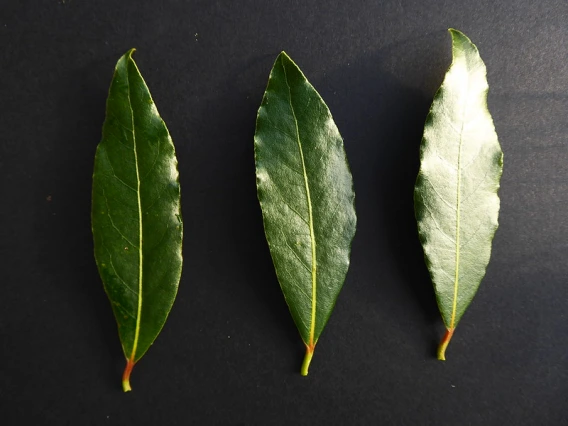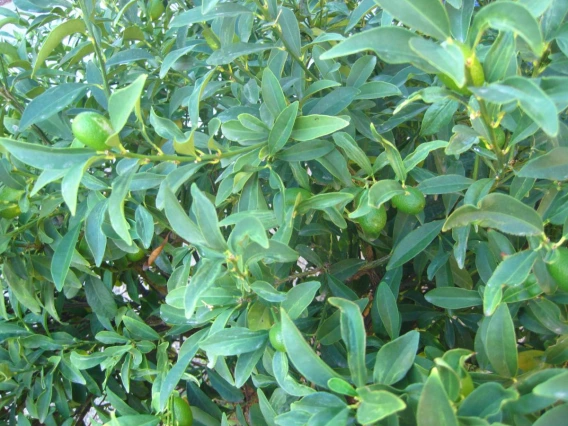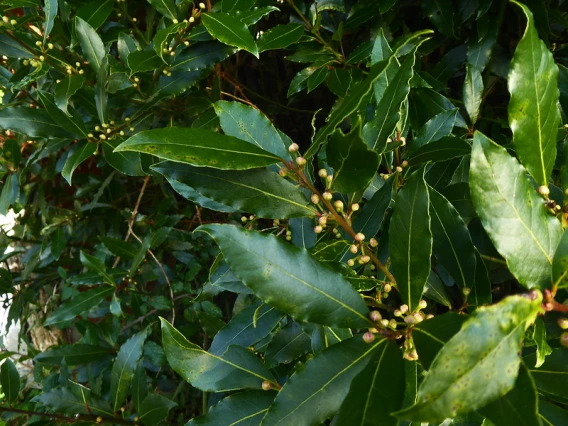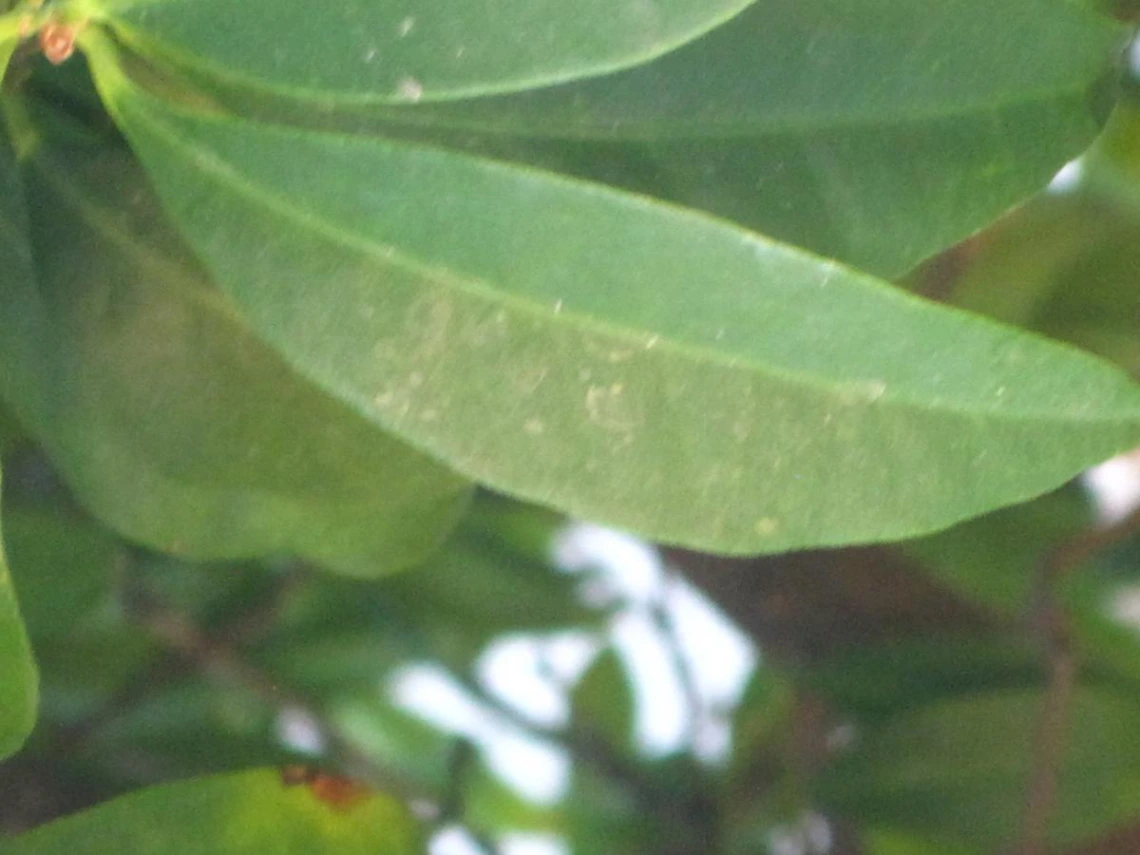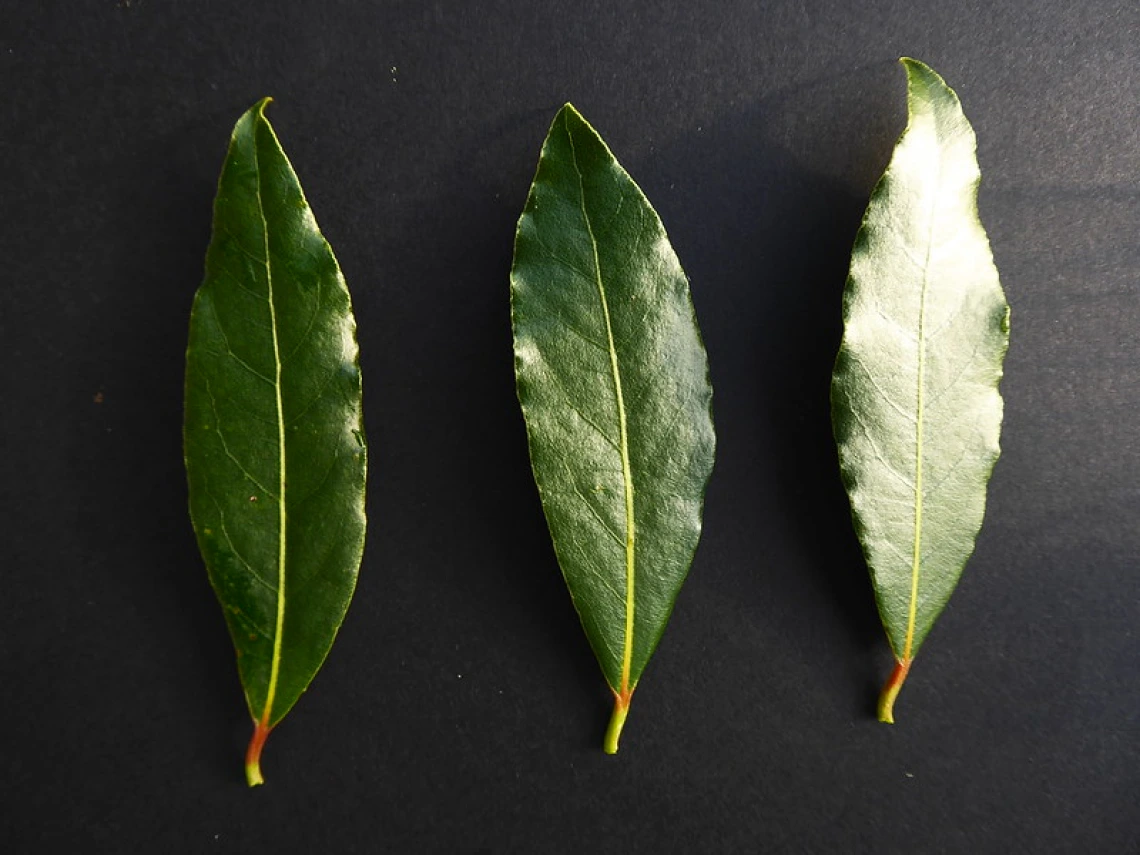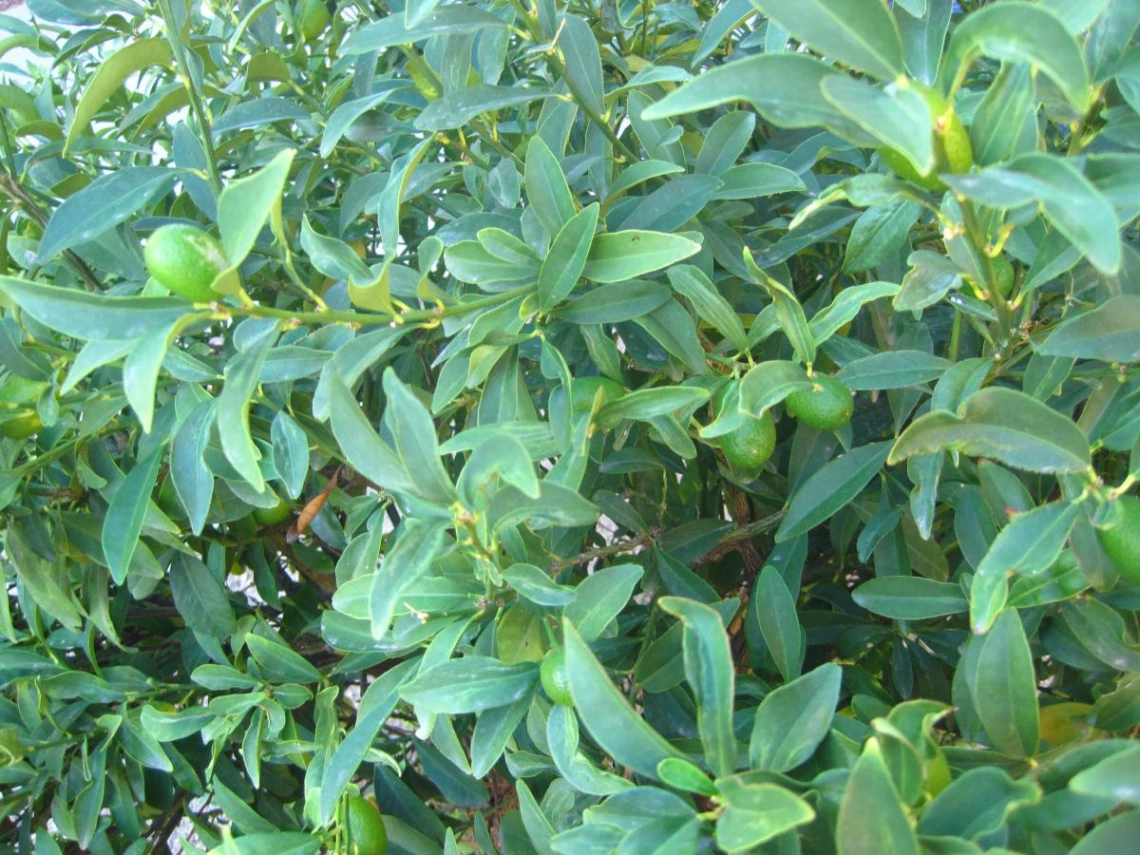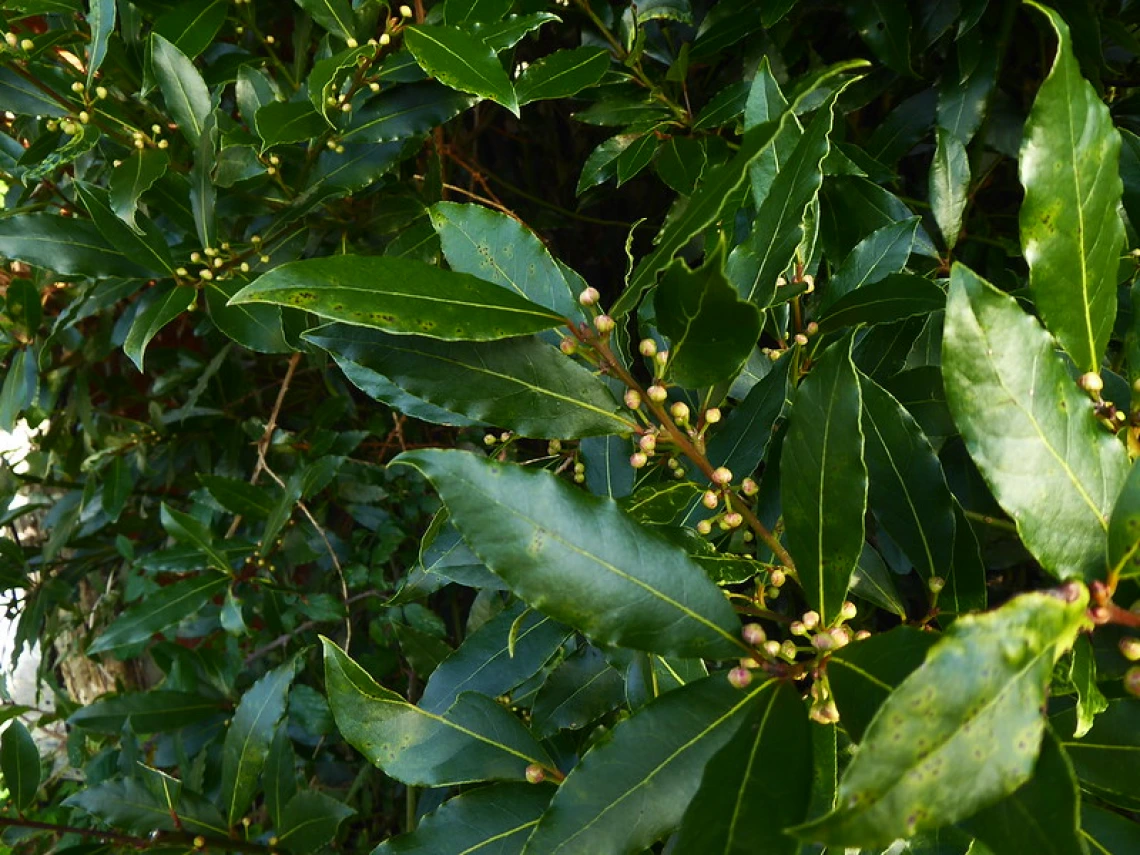Medicinal Plants Virtual Tour
Laurus nobilis | Lauraceae | bay laurel
Medicinal Properties:
The Greek gods of healing and medicine, Apollo and Aesclepius, held the bay laurel sacred (1). Dioscorides, a Greek physician and botanist in the first century A.D., recommended bay laurel bark for fortifying the liver and dissolving kidney stones. Ancient Greeks and Romans used an infusion of the leaves to warm and tonify the stomach and bladder, and made a paste from the leaves to relieve the pain of bee stings. Bay laurels have been used to treat uterine problems, rheumatism, and for nerves.
The leaves and extracts are used to suppress high blood sugar, fungal and bacterial infections. It has been used to treat eructation, flatulence and gastrointestinal problems. As such, infusions of dry bay leaves are used in folk medicine for their stomachic and carminative remedies as well as to treat gastric diseases. It exhibits anti-inflammatory, anticonvulsive, antiepileptic and antioxidant properties. The essential oil is an analgesic and anti-inflammatory making it useful to relieve aching muscles as a decoction in a bath or as an essential oil for massage oil. Compounds with activity against MRSA have been purified from bay laurel. In high doses bay laurel has cytotoxic activity (causes damage to cells). Research has shown extracts have the ability to inhibit nitric oxide radicals which is significant for the treatment of inflammation, Parkinson’s disease, Alzheimer’s disease, and atherosclerosis.



